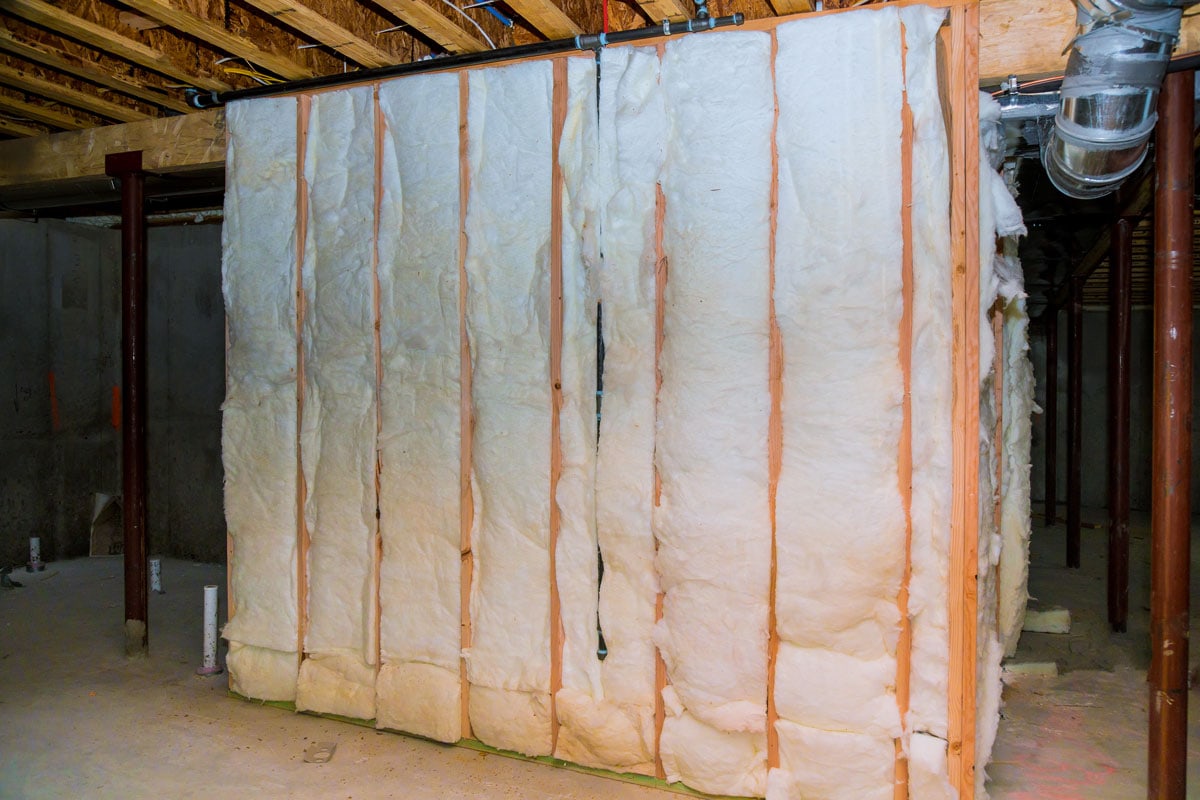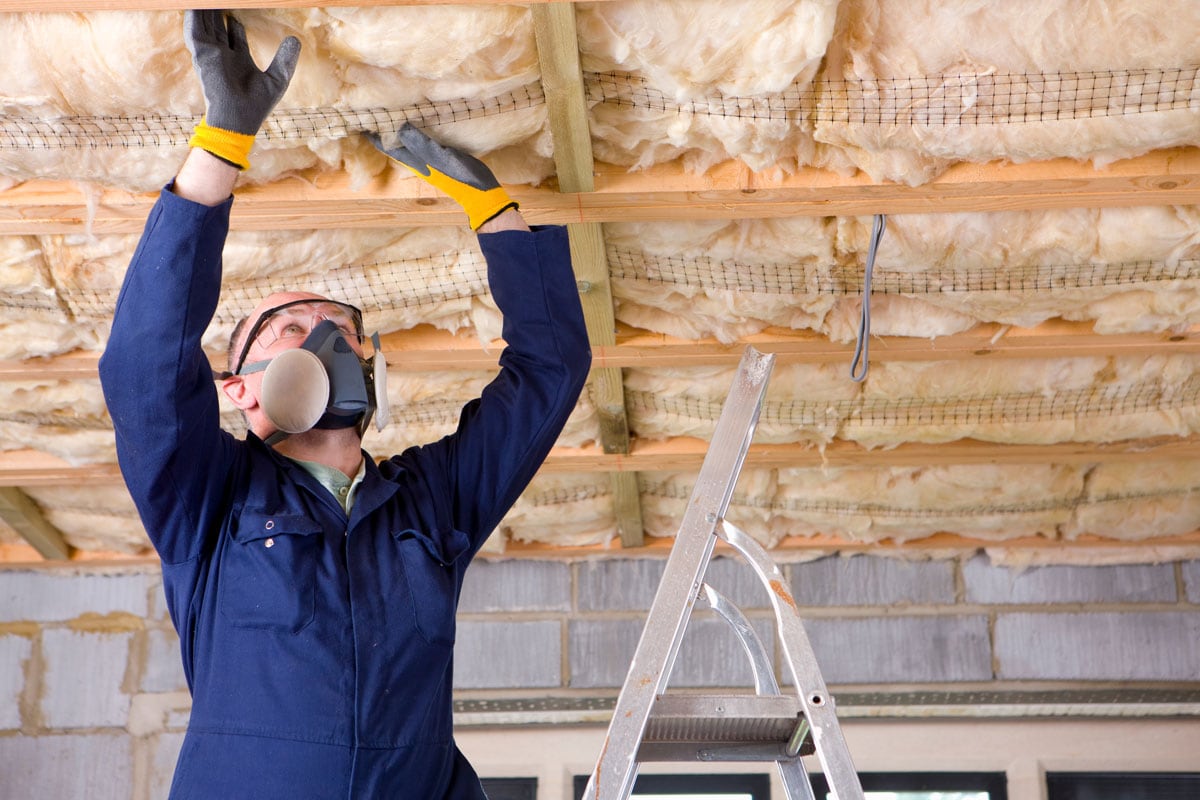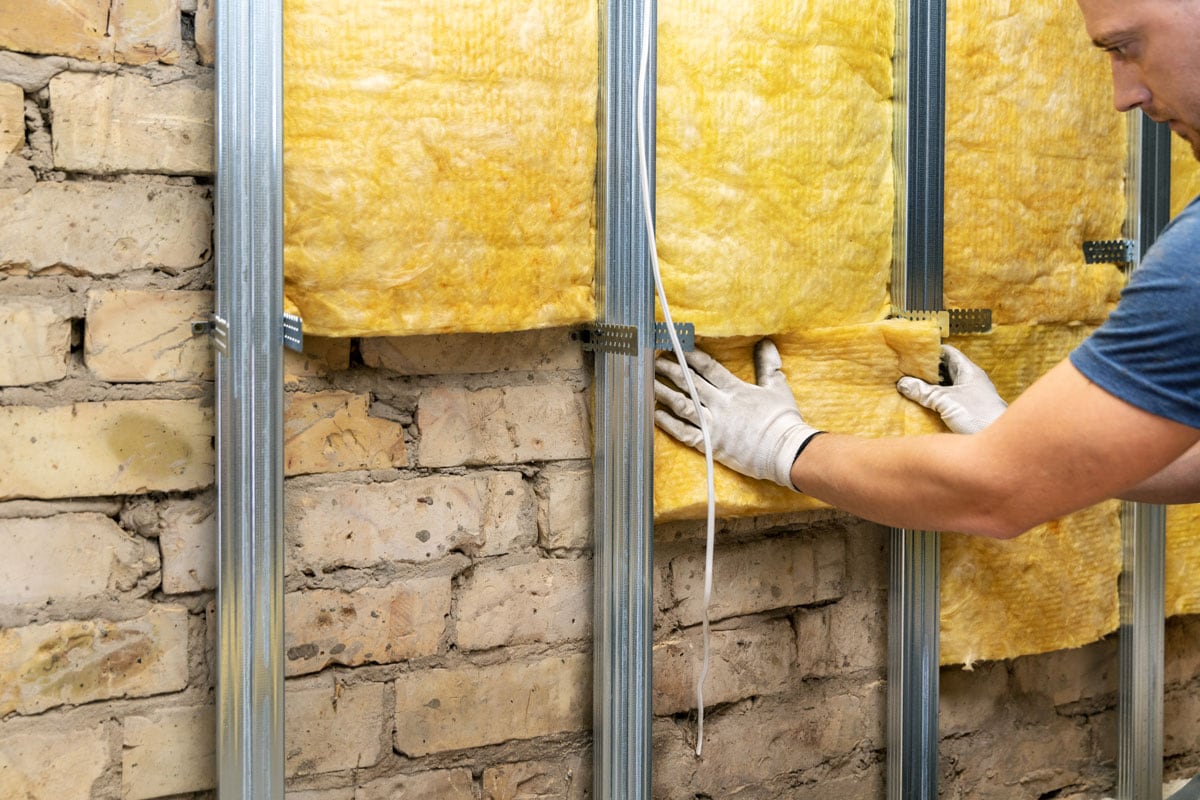Maybe you want to add some color to your basement, and you're wondering whether you can paint the insulation in it without causing any damage. We have researched the answer for you, and here is what we found.
Yes, you can paint your basement insulation. Using latex or water-based acrylic, you can paint styrofoam or spray foam insulation. These types of paint do not contain harsh chemicals, which can damage foam insulation.
Keep reading to learn more about painting your basement insulation. We will also cover what materials you should use for painting and how to prepare your basement insulation.
How To Paint Your Basement Insulation
If you have foam insulation in your basement that is exposed and not covered with drywall or wallboard, you can paint it. This can help to seal the foam, making it firm and solid.
Painting your basement foam insulation can be an improvement for your home. It will revamp the atmosphere and the aesthetics of your basement so you can enjoy the space.
Before painting your insulation, make sure you adhere to fire codes for safety. Seek professional advice to ensure that you're doing things correctly.
Painting Your Styrofoam Insulation
Painting styrofoam insulation is easy. It can be a simple DIY project if you have the right tools. Don’t forget to wear protective gear, such as eye protection and a face mask, as needed.

Tools To Use
- Face mask
- Eye protection
- Sandpaper
- Spray gun or brush
Steps
- Put on your protective gear.
- Put paper or plastic sheets on the floor or other surfaces to protect them from possible drippings or sprays.
- Sand the corners of the foam with sandpaper to achieve smooth edges.
- Apply two to three coats of paint to the foam. You should apply it evenly.
- Hold the spray gun at a distance for flexible use and avoid over-spraying. You can also use a brush for the project.
Check out this sandpaper variety pack on Amazon.
Painting Considerations
Styrofoam and rigid foam insulation are made of polystyrene. It is cheap and flexible to use, but it is not advisable to be lone insulation. It is combustible and quickly melts when exposed to heat or fire.
No coatings can protect it from meeting the 15-minute fire rating.
In this case, or with an expert’s approval, you may coat your foam insulation with a top layer of spray foam insulation and then have it coated with a fire-retardant paint that meets the fire code.
Check out this pink insulation on Amazon.
Painting Your Spray Foam Insulation
Painting spray foam insulation takes more time to ensure the foam is ready for painting.
Sanding can also be more time-consuming with this type of insulation due to its bumpy, uneven surface. However, painting it will give you less hassle and is more manageable.
Tools To use
- Face mask
- Eye protection
- Sandpaper
- Spray gun (recommended)
Steps
- Wait for a minimum of 24 hours or more for the insulation to dry completely after installation before painting. Spraying paint on half-dried spray foam can lessen its overall quality.
- Sand the foam to remove lumps and create an even surface.
- You should use spray paint on spray foam. It takes less time and is much lighter for the foam surface.
Check out this spray foam gun on Amazon.

Painting Considerations
SPF or spray foam insulation uses polyurethane. Install it carefully by painting it with fire retardant to meet the fire code. The paint can give a five or 15-minute thermal blocking rating.
Use only water-based acrylic or latex paints for your foam insulation. Also, it is recommended to use flat or semi-gloss paints to conceal bumpy areas in the foam.
Which Paints To Use
Only water-based acrylic or latex paints are advisable for foam insulation. Water-based acrylic paint is much safer and highly recommended.
Using regular latex is not safe. 100% water-based acrylic paint is one of the ideal paints for your foam insulation.
Note that your fire-retardant paint has passed the full-scale tests and has a 15-minute thermal blocking. It comes in a variety of colors, from white to colorful ones. It is also widely available online and in home improvement stores.
Spray Paint Or Brush

Using spray paint with the correct type of paint on foam insulation is advisable. Spray paint has more benefits and will allow you to finish the task quickly.
Spray paint creates an even, uniform coating and is easy to use. You should stay at least 1.5 feet away from the foam surface when spraying to avoid damage or overspray.
A brush or a roller brush can give a denser texture to the foam, but this method is more time-consuming.
You may need to move to different locations more than once to reach the corners and edges of the insulation since the brush has a short reach, but you can upgrade your roller brush with a stick.
Check out this paint roller on Amazon.
Tips And Tricks For Painting Insulation
Always observe safety and ensure a clean environment when painting your basement insulation.
There are things to consider when working with chemicals like paint. You will need to make sure that your basement is prepared for the project.
- Ventilate the space. Turn on the fan and open your basement windows. Never paint near an open source of heat or fire.
- Seal all exposed electrical outlets with painter’s tape or turn off the circuit breaker as necessary during painting.
- Wear protective items, such as gloves and a face mask.
- Get the correct type of paint for foam insulation, such as water-based acrylic or latex paints.
- Clean dirt or debris and smooth the surface before painting.
- Use a paint that's meant for porous surfaces like foam insulation.
- Apply thin, uniform coats of paint on the surface and avoid overspray or drips.
- Let each coat fully dry before spraying the second one.
- Spray paint is ideal for foam insulation as it uniformly coats the whole surface area.
- Dispose of paint properly after using it. Store leftover paint in a secure place, away from the reach of children and extreme temperatures.
Does Paint Melt Foam?

A regular paint that contains solvents or chemicals like enamel can damage foam. It may burn the foam surface or dissolve it.
It is safer to use latex or water-based acrylic on foam insulation since it is water-based and has softer chemical contents.
How Long Does Foam Insulation Last?
Foam insulation can last up to a century. It's long-lasting and durable. It can endure temperature, moisture, and mold growth. The two types of foam insulation are closed and open cells. The former is more effective and enduring.
How To Maintain Your Foam Insulation
Foam insulation is known for its longevity but maintaining it is another thing. With or without the paint on, it still can last for many decades.
Proper installation, maintenance, and painting can help prolong the lifespan of your foam insulation. Follow these tips.
- Determine the correct thickness of the foam to install when insulating.
- Pull out any old insulation before installing new insulation.
- Clean and dry the substrates thoroughly before installing the foam.
- Do not leave any holes or gaps in the insulation. Seal them with caulk or a sealant.
- Do not install foam insulation on extremely hot or cold surfaces. A hot temperature of over 80 degrees Fahrenheit and a freezing temperature below 60 degrees Fahrenheit will not be safe for the foam.
Closing

You can paint your basement insulation with some considerations. Use water-based acrylic or latex paints on your foam insulation.
Make sure to meet the fire code for your foam insulation without drywall. Fire retardant paints can help secure the safety of your insulation.
Discover more about basement insulation in these posts:




